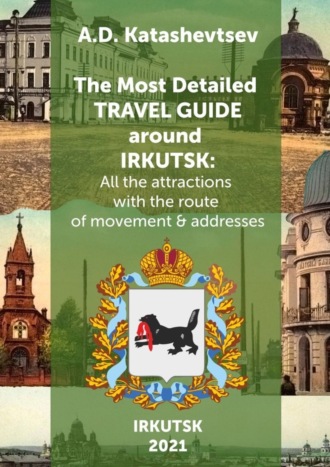
Полная версия
The Most Detailed Travel Guide around Irkutsk. All the attractions with the route of movement & addresses
The magnificent mansion is adjoined by a shopping building, which was built for the merchant N.S. Chupalov back in 1801, according to A.I. Losev, but it was bought by the family of Vtorov. After it is a house of the Soviet era, built in 1951, overlooks Labour Square. It adjoins the mansion of the 1st guild merchant I.S. Dubnikov, whose estate occupied almost the entire block in the past.

1st guild merchant A.F. Vtorov
We dive to the left into a short lane and freeze in front of the walls of a magnificent castle with towers and “Stars of David” in the frieze. It is easy to guess that this is the house of the head of the Jewish community of Irkutsk I.M. Feinberg. The mansion was built according to the project of the city architect A.I. Kuznetsov in 1902. Since then, the house has been occupied by many organizations from the construction management of the Circum-Baikal Railway to the art museum and college, which is now located there. During the civil war in Russia, the units of the Red Army were formed here and also worked famous commanders S.G. Lazo and A.A. Taube.
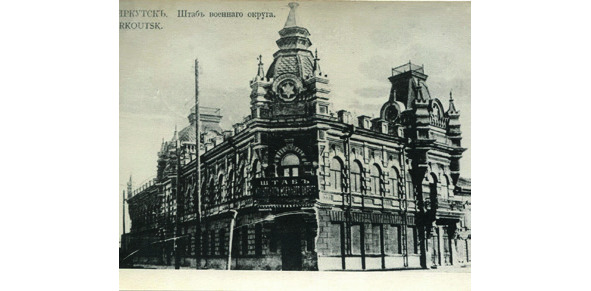
On the right, through the branches of the trees, you can see the sculpture “Muse”, which was installed on the 300th anniversary of the assignment of the status of the city to Irkutsk in 1986 opposite the building of the Irkutsk Regional Children’s School of Arts. By the way, here studied until 1990 the People’s Artist of the Russian Federation, virtuoso pianist D.L. Matsuev. Thanks to this man, since 2004, every September in Irkutsk, the festival of classical music “Stars on Baikal” has been held. The repertoire of the musical theatre in the capital of Eastern Siberia at this time resembles the posters of the best concert halls in the world.
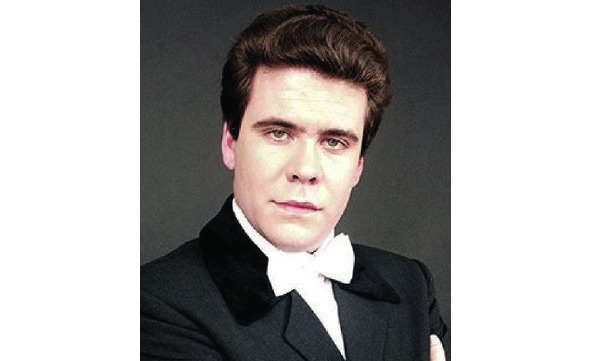
Virtuoso pianist D.L. Matsuev
Directly behind the school of arts placed a small wooden house of mechanics Karasev, where in 1909 illegally lived the frustrated head of the Soviet Union S.M. Kirov. He spent six months in Irkutsk and during this time changed 12 addresses. His underground work led to numerous strikes by railroad workers in 1910.
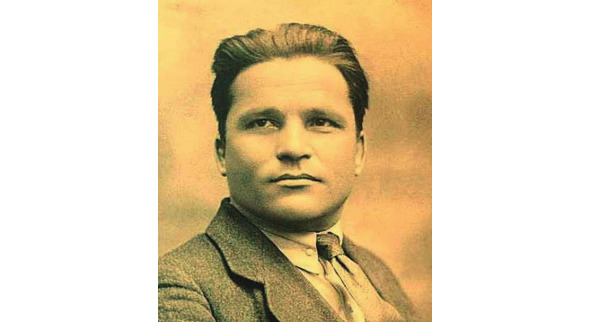
S.M. Kirov
Opposite is the exhibition center named after the Irkutsk artist V.S. Rogal, which opened here in 1999 and is often used for various thematic exhibitions, so this is one of the most dynamically developing art museums in Irkutsk. In the past at this place was a small wooden house, where in 1901 was born one of the greatest documentary filmmakers of the XX century – M.I. Romm.

Exhibition center named after the Irkutsk artist V.S. Rogal
At the next crossroads, we turn right onto the street named after the founder of the squadron of anarchists and partisan movement in Eastern Siberia during the civil war, N.A. Kalandarishvili. At the corner of the street (Khalturina, 8/1) you can still see the house where he lived. He was visited several times by such people as one of the founders of Mongolia and the head of the guerrilla movement in Western Siberia B.Z. Shumyatsky, as well as the commander of the troops of the Far Eastern Republic I.P. Uborevich. In many ways, the Mongolian state was created in this house.
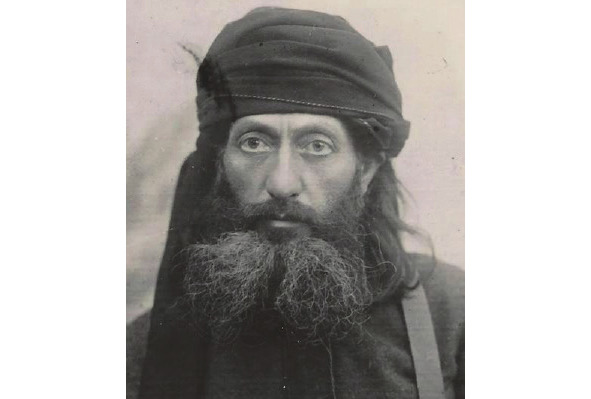
Founder of the squadron of anarchists in Siberia N.A. Kalandarishvili
The famous “Zhelyabov” wooden quarter begins from this lane. In this part of Irkutsk, an entire area of historical buildings has been preserved almost in its original form. On the left is the one-story wing of the estate of the impoverished merchant Vyazmin on Kalandarishvili Street meet us first. All of its buildings are designed in a classic style.
We turn left and find ourselves at the end of the 19th century. On the right, across the street is Orlova’s pink mansion, upholstered in rustic wood. Continue moving along Zhilyabov Street, on the left we notice the magnificent greenish carved house of Lavrentiev, which was rented out for the needs of the gymnasium for boys of the Russian Gentry Assembly since 1906.
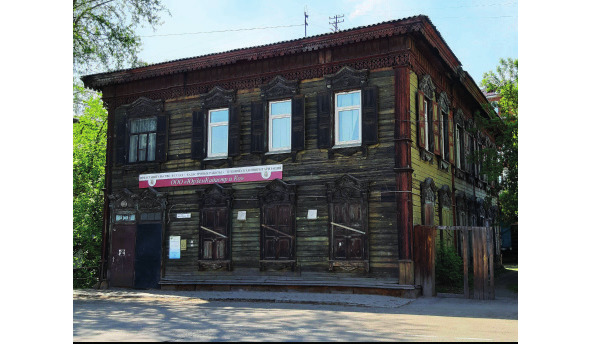
House of Lavrentiev
Behind it is Ivanov’s mansion painted in red lead with an apartment building. At the end of XIX century here lived son of the main fur trader in Siberia and the first director of Irkutsk Drama Theatre I.B. Patushinsky.
He was followed by the beige estate of the explorer of the Aleutian Islands and one of the leaders of Russian America A.P. Ocheredin (st. Zhelyabova, 25a). Here we turn right into the narrow Pugachev lane.
We are greeted by the recently renovated house of the merchant V. Posokhov, where the hotel of the same name is located today. Behind it is the modest but oldest grey estate of Kolchenov with an outbuilding and a barn built in the 1860s.
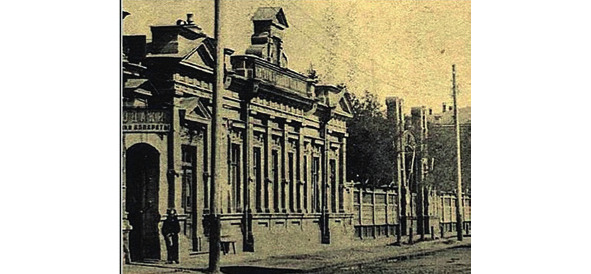
Mutual Insurance Society im Irkutsk
The lane ends up with a long brick building of the warehouse of the Mutual Insurance Society built in the 1880s. At the crossroads let’s turn left and go to the next intersection, opposite which is the Intermunicipal Directorate of the Ministry of Internal Affairs of Russia “Irkutskoye”, which is easy to identify by the retro police car standing in the exhibit to the right of the entrance.
Let’s turn left here again, going around the two wooden houses of the Dobrokhotova estate. After them you can see an inconspicuous beige house, where in 1902 was born the famous constructor of military helicopters N.I. Kamov. By the way, shortly after his birth, this house was visited by polar explorer A.V. Kolchak.

House, where was born the constructor of helicopters N.I. Kamov
The opposite side of the street is occupied by a residential building built in 1987 in the brutalist style according to the project of V.A. Pavlova. At the intersection with Zhelyabov Street on the left, is Michurin’s blue estate with store.
Further, on the Dekabr’skikh Sobytiy Street attention is drawn to Shipunov estate with a stone first floor located on the right. After it is the former Yakovlev‘s apartment building with an arms shop.
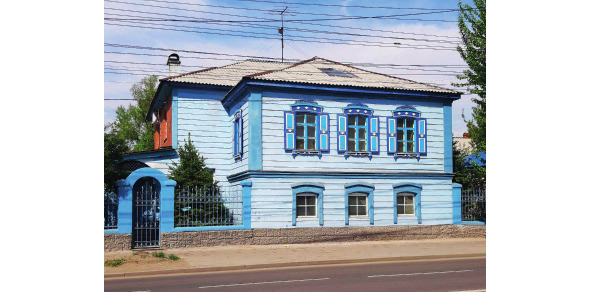
Michurin’s estate with store
But more attention attracts the huge stone mansion in poor condition on the other side of the intersection. This is the estate of famous Irkutsk merchants and benefactors known as Medvednikovs, after whom the modern Khalturin Street was once named. They were the founders of the first bank in the history of Irkutsk, as well as the first gymnasium for girls in Siberia. The building itself was created back in 1795 according to the project of A.I. Losev and now requires immediate restoration.
Here we turn right on Khalturin Street in order to admire the mansion of the city architect A.P. Artyushkov in a classic style (Khalturina st., 21), which was recently restored. The street, named after the author of the terrorist attack in the Winter Palace in 1880 S.N. Khalutrin, ends at the fence of the shopping center “Fortuna”.
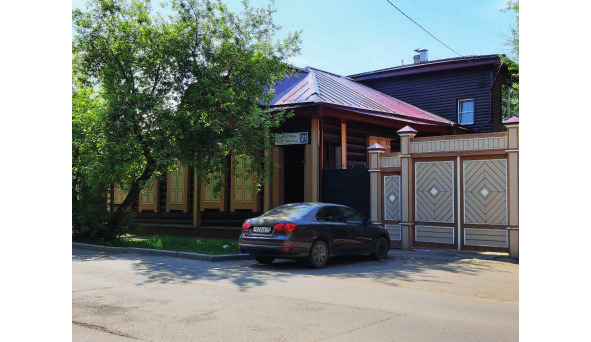
Mansion of the city architect A.P. Artyushkov
In the past, all trading floors here were occupied by the firstborn of mechanical engineering in the Irkutsk region – the heavy machinery plant named after V.V. Kuybyshev. It arose in this part of the city in 1930 on the basis of E. Khanov’s transport workshops, where military transport was repaired and produced for the needs of Siberia and the Far East. After the revolution, the main profile of the enterprise was the production of gold mining equipment. In 1968, the world’s largest river scoop dredge (length 236 m, width 50 m, height 54 m, weight 10,300 tons) was created here. Totally 184 dredges were produced, which are currently used in 17 countries of the world.
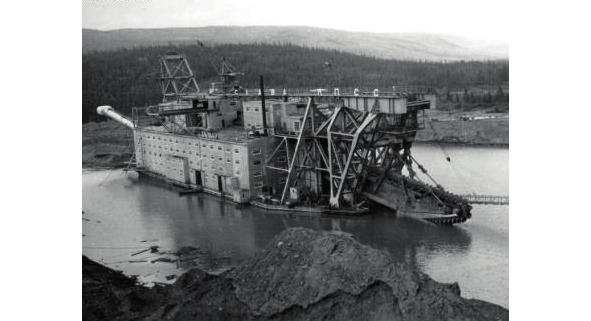
The world’s largest river scoop dredge
In addition, the plant created equipment that is now installed on almost all blast furnaces of the former Soviet Union. Not to mention that the largest plants of ferrous and non-ferrous metallurgy in Russia are equipped with semi-continuous casting machines manufactured by IHMP. Although only two workshops remain of the former greatness, today the enterprise is being revived. In 2012 it received an order to manufacture metal structures for the cosmodrome “Vostochny”.
Immediately behind the former buildings of IHMP Ushakovka River begins – another waterway of Irkutsk. Initially it was called Ida, but in 1681 the merchants brothers Ushakovs built a mill on it and they began to be called by their last name. In the past, it caused a lot of trouble for the city by floods, and its mouth stretched for 400 m. However, today the river is unrecognizable – it has become very shallow, the water is not drinkable, and the hydrogen sulphide springs, which made its waters curative in the past, were filled up during the development of the quarry inside the city.
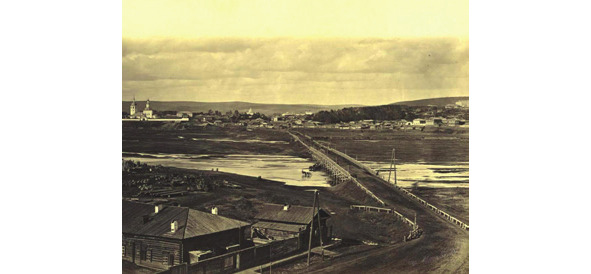
Ushakovka River
We are crossing Ushakovka River along the Znamensky bridge, which appeared near the mouth by 1868 and find ourselves in the suburb of Marat. Once upon a time at this place was the building of the Admiralty, which located in Irkutsk from 1754 to 1839. and managed the Pacific Fleet, as well as subsequently the affairs of Russian America. At that time, the capital of Eastern Siberia already had its own navigation school and shipyards; factories for the production of ropes, shipbuilding materials, anchors; there was a spinning mill, a resin factory, hemp shops and much more.
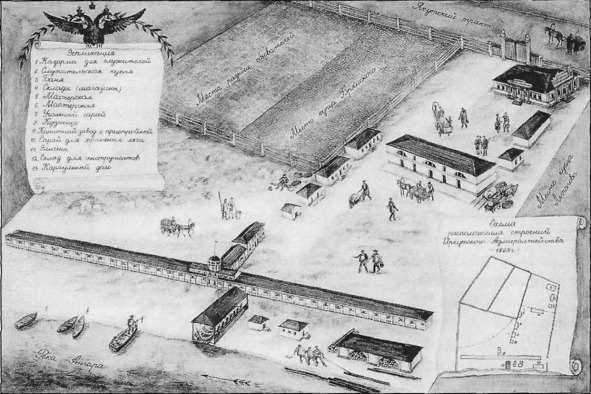
Admiralty in Irkutsk
Monastery of Icon of Our Lady of the Sign
We go around the transport ring around the “Admiralty Grove” and arrive at the complex of the oldest nunnery in the Angara region, founded here in the name of Icon of Our Lady of the Sign in 1689. Despite its remoteness, the monastery has always attracted a lot of attention. In 1708 a first Russian Emperor Peter the Great personally sent the Gospel to here, which is still preserved in the monastery in a heavy silver frame. In 1741 the daughter of the favourite of the Peter’s court A.P. Volynsky – Anna, was forced to spent here about six months. As gratitude for the care shown to her here she presented the altar gospel.
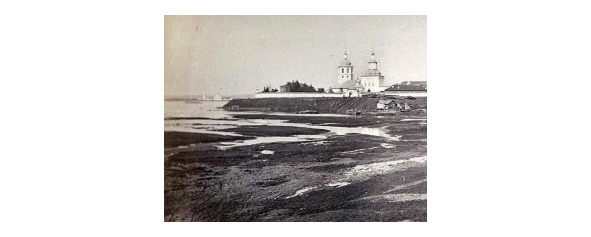
Nunnery in the name of Icon of Our Lady of the Sign
The first to meet us is the only monument in Russia to the admiral and Supreme Leader of Russian Empire A.V. Kolchak, which was installed here on the 130th anniversary of his birth on November 4, 2004 according to the project of V.M. Klykov and at the expense of the famous Irkutsk criminal authority S.V. Andreev.
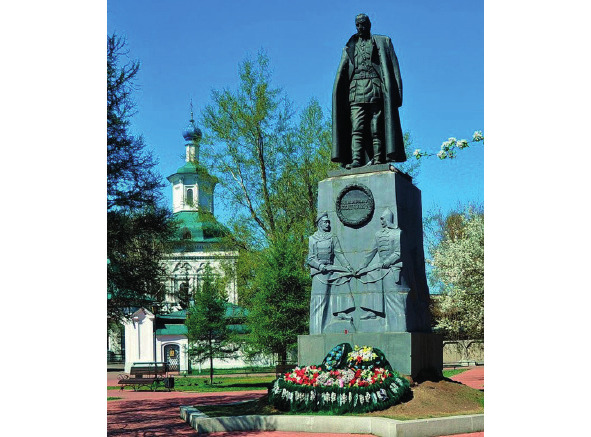
Monument to admiral A.V. Kolchak
Irkutsk was a fateful city for A.V. Kolchak. He was here six times (1902, 1903, 1904, 1911, 1918, 1920). Firstly, he was married in Irkutsk on March 5, 1904 in St. Charalambos church on his only wife S.F. Omirova, who came to Verkhoyansk for him from St. Petersburg. From here, right after the wedding, he went to war with Japan, crossing Lake Baikal on foot along the ice railway. Finally on February 7, 1920 A.V. Kolchak was shot in the Irkutsk prison castle, and his body was thrown into an ice-hole of the Angara River, where the nuns of the Monastery of Icon of Our Lady of the Sign took water. Therefore, the location of the monument is not accidental: opposite the mouth of the Ushakovka River at the intersection with the former Yakutsk Tract (nowdays Rabochego Shtaba street), along which A.V. Kolchak first entered Irkutsk in 1902, returning from an expedition to search for Sannikov Land (a phantom island in the Arctic Ocean).
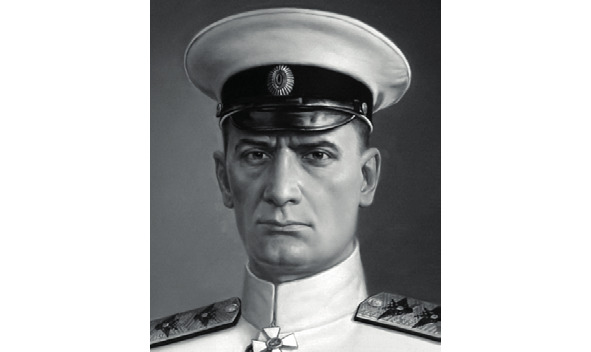
Admiral A.V. Kolchak
Every year, the court hearings do not subside with the demand to dismantle the monument to the “tyrant and executioner”. However, it is worth recalling that whole world polar expeditions to this day are carried out according to the methods developed by A.V. Kolchak. It was not without reason that he was the fourth person in history to be awarded the Konstantine gold medal – the highest award conferred by Russian Geographical Society.
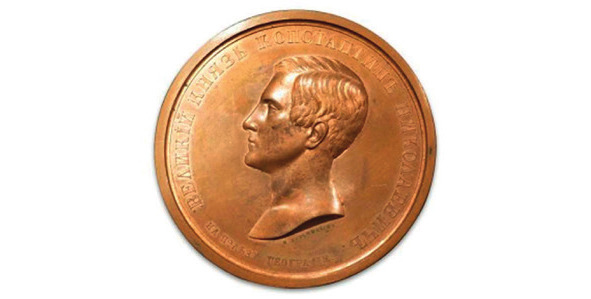
Constantine Medal of IRGS
In addition, without his participation in the Collegium of the Naval General Staff, as well as a talented strategy for mining the Baltic, the WWI would have ended in defeat for Russia already in the summer of 1915, when Germany brought down all the power of its fleet. And thanks to his command of Black Sea Fleet (he was the youngest admiral among the warring countries) the Turks forever forgot the entrance to Black Sea. If only for this reasons the monument must be preserved.
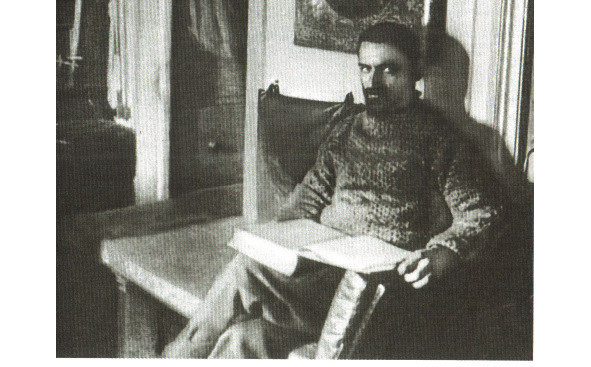
A.V. Kolchak on the expedition
But we will continue our journey and visit the territory of Monastery of Icon of Our Lady of the Sign, where there is a small but famous cemetery, which was almost completely destroyed after the creation of the first hydro-airport in the history of Siberia in 1928 on the Angara River. Our Lady of the Sign Cathedral itself, built back in 1762. But during the years of Soviet power it was taken to the aircraft workshop, and the territory of the cemetery was razed to the ground. Despite all the changes, it was possible to find and even preserve some of the most significant burials.
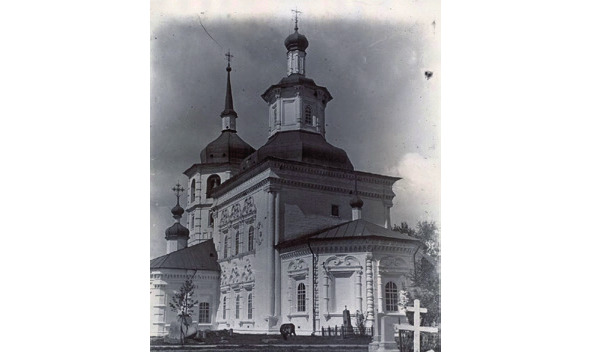
Znamensky Necropolis
Right at the entrance we meet the grave of the Decembrist V.A. Bechasnov – one of the few who stayed in Siberia of his own will after the amnesty. Left in the corner of the front garden you can see the grave of N.A. Panov – the only of the rebels who led the grenadier detachment to Senate Square on December 14, 1825 and surrounded the Winter Palace – he was 22 years old at that moment. Opposite him was buried P.A. Mukhanov, who was not a participant in the main events of the Decembrist Uprising but paid for the intention to kill the emperor by exile to Siberia. He only a little did not live up to the amnesty and before his wedding after moving to a settlement in Irkutsk.
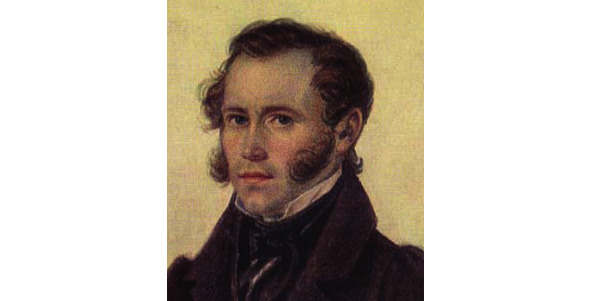
Decembrist V.A. Bechasnov
The Decembrists may be treated differently, but the feat of their wives can be considered only in one way. Only 11 women (out of 23 marrieds) followed the 121 Decembrists exiled to Siberia. And the first of them was buried in this cemetery – this is Princess E.I. Trubetskaya. As the heir to one of the richest families of France, she was the wife of Colonel S.P. Trubetskoy – the manque dictator of the Russian Republic and the head of the uprising. She did not live less than two years before the amnesty and died in Irkutsk in 1854 – the whole Irkutsk buried her. The feat had a miraculous effect on this woman: being childless in health, she gave birth to her first child only here in Siberia – that was her daughter Alexandra, and then six more children. Three of them rest next to their mother under a small stone cube behind the gravestone to E.I. Trubetskaya. Her husband managed to return to central Russia after the amnesty, and soon moved the four surviving children out of here.

Princess E.I. Trubetskaya
In addition to old burials, you can see modern ones here. Further on the left we will see the place where the buried “conscience of Russia” V.G. Rasputin who is the last “village writer”, public figure and creator of the festival “Days of Russian spirituality and culture ‘Shining of Russia’”. He died in Moscow on March 14, 2015, several hours before his 78th birthday. Novels of V.G. Rasputin “Farewell to Matera”, “Live and Remember”, “French Lessons” are immortal works of Russian literature and are taught in the school curriculum. This writer has no connections with the famous family friend of the Russian Emperor Nicholas II G.E. Rasputin, since he was killed in 1916 and his only son Dmitry died in 1933 and could not be the father of this man of letters, who was born in 1937.

V.G. Rasputin
Behind the grave of the famous writer, you can see a strange monument resembling a tree trunk with a chopped off top, branches and roots. This is the grave of the honourary citizen of Irkutsk, the 1st guild merchant of Shuya and Irkutsk, the gold miner and tea trader V.F. Kolygin, who left no heirs, since all of his five children died in infancy.
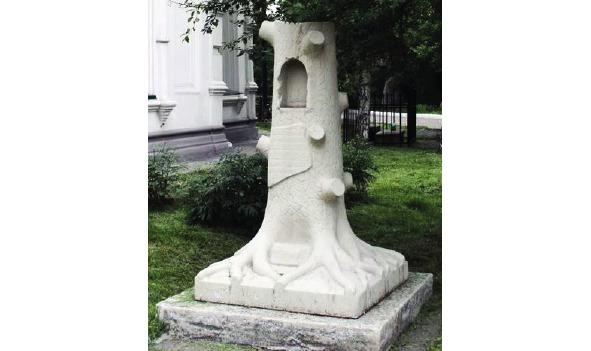
Time to visit the Cathedral of Our Lady of the Sign, which is one of two churches in Irkutsk, where the original iconostasis has been partially preserved. The church was re-painted, but already by Soviet artists, what immediately catches the eye.

Original iconostasis of the Cathedral of Our Lady of the Sign
The main treasure of the monastery is a feretory with the relics of St. Innocent of Irkutsk, the first saint of Eastern Siberia. He was born not here, but in Malorussia (modern Ukraine) near Chernigov in 1682. He received a good theological education, which helped him, after being tonsured a monk, to get a teaching position at the first school at the history of Russia called Slavic-Greek-Latin Academy in 1714. There he met Peter I, who took him to his fleet on the ship “Samson”.
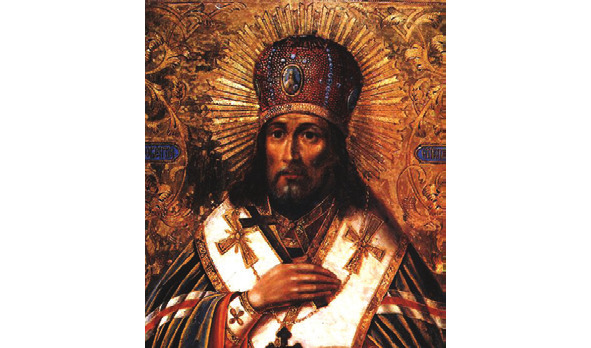
St. Innocent
Fate brought Innocent to Siberia when he was sent as part of the embassy to China in 1721. However, due to a number of circumstances, he stayed here forever and was appointed as the first bishop of Irkutsk and Nerchinsk. Having held this post for less than five years, Innocent died and was buried at the Ascension Monastery near Irkutsk in 1731, but various miracles at his the burial place, as well as lifetime exploits led to the canonization of the bishop in 1804.
His relics have disappeared at the devastation of the monastery in 1921. Only in 1989, in one of the museums of Yaroslavl it was discovered in the exhibition under the label “Siberian mummy”. St. Innocent’s relics were solemnly returned to Irkutsk in 1990, and still they are here in a feretory to the right of the main aisle.
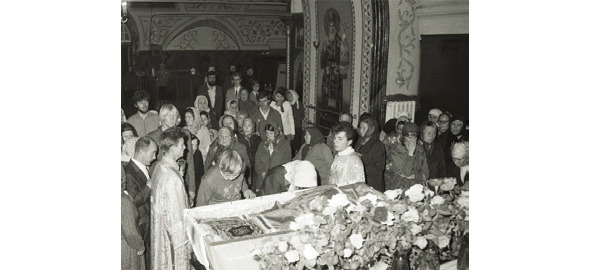
Return of St. Innocent
Having got acquainted with the interior of the church, let’s complete the circle along the temple. Here at the apse is the resting place of the “Russian Columbus” G.I. Shelikhov, who founded the first Russian settlement in North America on August 3, 1784.
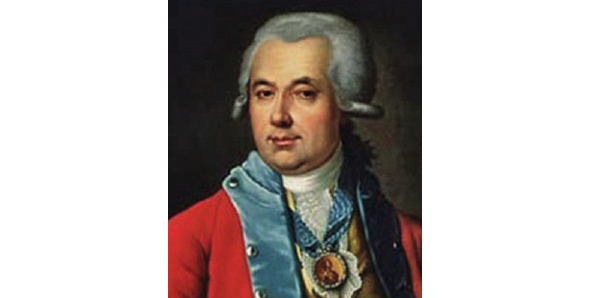
“Russian Columbus” G.I. Shelikhov,
The tombstone on his grave appeared only in 1800, five years after his death by the highest will of the Russian Emperor Paul I. The epitaphs were compiled by the great Russian poets G.R. Derzhavin and I.I. Dmitriev. On the monument you can see Aleutian masks, anchors, ship logs, masts and an image of death, which so early interrupted the life of that great explorer (died at the age of 46). In addition, on the monument, right under the bas-relief of G.I. Shelikhov, you can see a medal and a sword, which he was awarded in 1788 personally from Empress Catherine the Great. But the support of the state ended there, and the merchant was left to himself in development of a new territories. Perhaps that led to his early death.
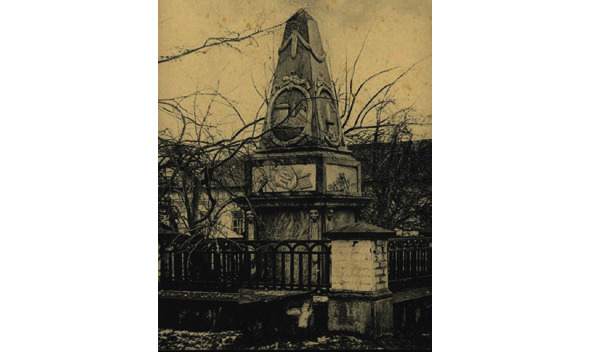
Tombstone on the grave of G.I. Shelikhov
Opposite the grave of the great explorer, under a white cube with a cross, there is an unnamed burial, where the imperishable body of Ioann Smirnov, the last archbishop of Irkutsk and Verkholensk, has been buried since 1930. Initially, he was buried in the Epiphany Cathedral, but after the handover of the temple to the bakery factory, the relics had to be reburied.
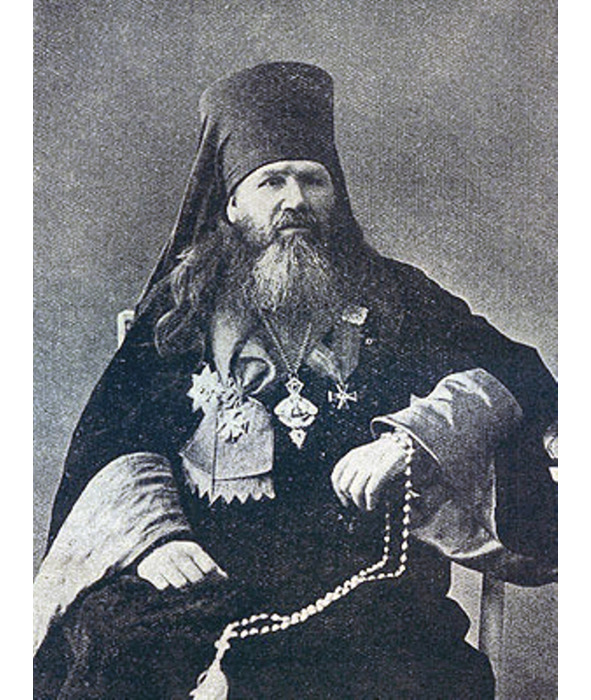
the last archbishop of Irkutsk and Verkholensk Ioann Smirnov
Nearby you can see the grave of another person with a difficult post-mortem fate. This is the burial place of the second bishop of Irkutsk and Nerchinsk, Innocent Nerunovich, who turned out to be a truly irreplaceable person, because after his death in 1747, for almost six years no one could be found in his place. Primarily, his body was buried at the Bratsk Saviour Hermitage, however, during the preparation of the bed of the future Bratsk water reservoir in 1960, the remains were transported by Bishop Veniamin Novitsky to Irkutsk and buried at the Radishchevo cemetery. On October 14, 2001, on the Intercession of the Virgin, the body of Innocent Nerunovich was solemnly reburied at the Our Lady of the Sign Monastery. Perhaps not for the last time, since nowdays the question of canonization of the bishop under the name St. Innocent of Bratsk is being discussed. In this case, his relics will be transported to the city of Bratsk.
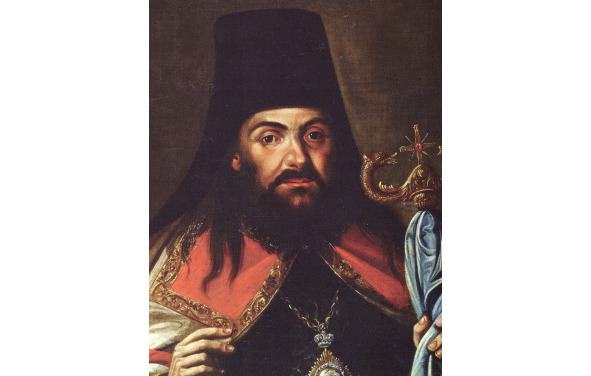
Bishop of Irkutsk and Nerchinsk Innocent Nerunovich
We leave the Our Lady of the Sign Monastery and continue our way along the Angara embankment along the street named after I.V. Surnova – an active participant in the “December events” in 1919. In the past, it was called the Admiralty, since it began from the center of the Siberian flotilla. Later it was renamed to Angarskaya and Peasant street.
On the right stretches the industrial area, where the administration of Yangelev mining and processing plant for the extraction of quartz sands is located, the deposit itself is in the north of the Irkutsk region in the Nizhneilimsk district. In close vicinity, the famous confectionery factory “Angara”, which produces more than 120 types of sweets since 1957.
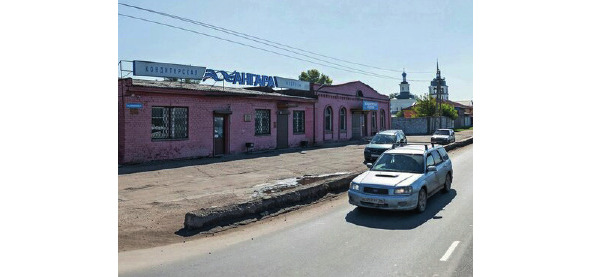
Confectionery factory “Angara”
In 1985, there were 70 industrial enterprises in Irkutsk, and every third Irkutsk citizen worked at the plant or factory. Today, less than a dozen factories remain in the city, the largest of which are presented by aircraft production, heavy engineering and constructing.

